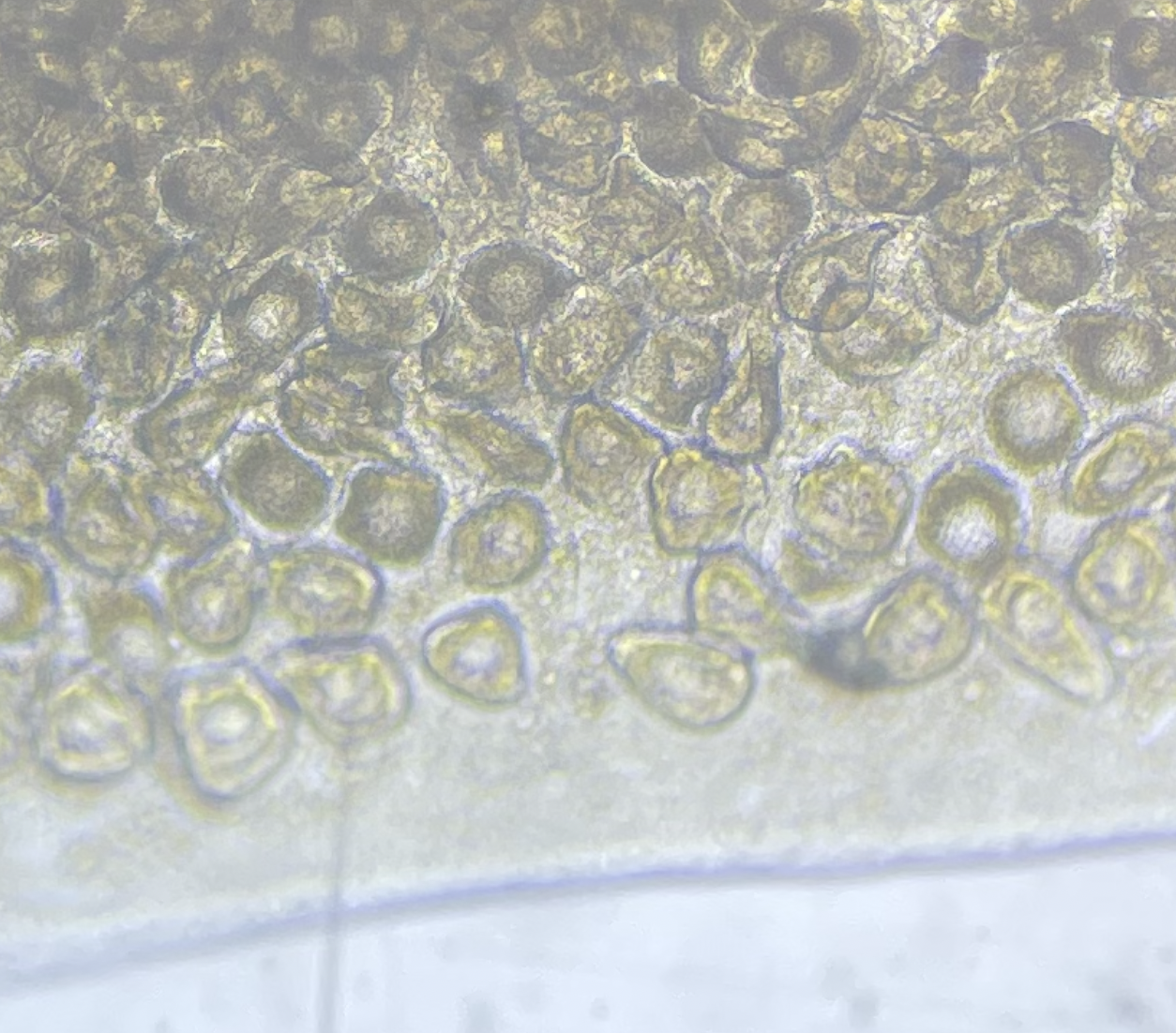We went out to the hatchery twice this week to clean up inventory and get prepped for spawning. We tagged a long for the second commercial spawn of the year.
New bags
On the near 10-holers there were 5 bags that were fouled and likely our PH stocks
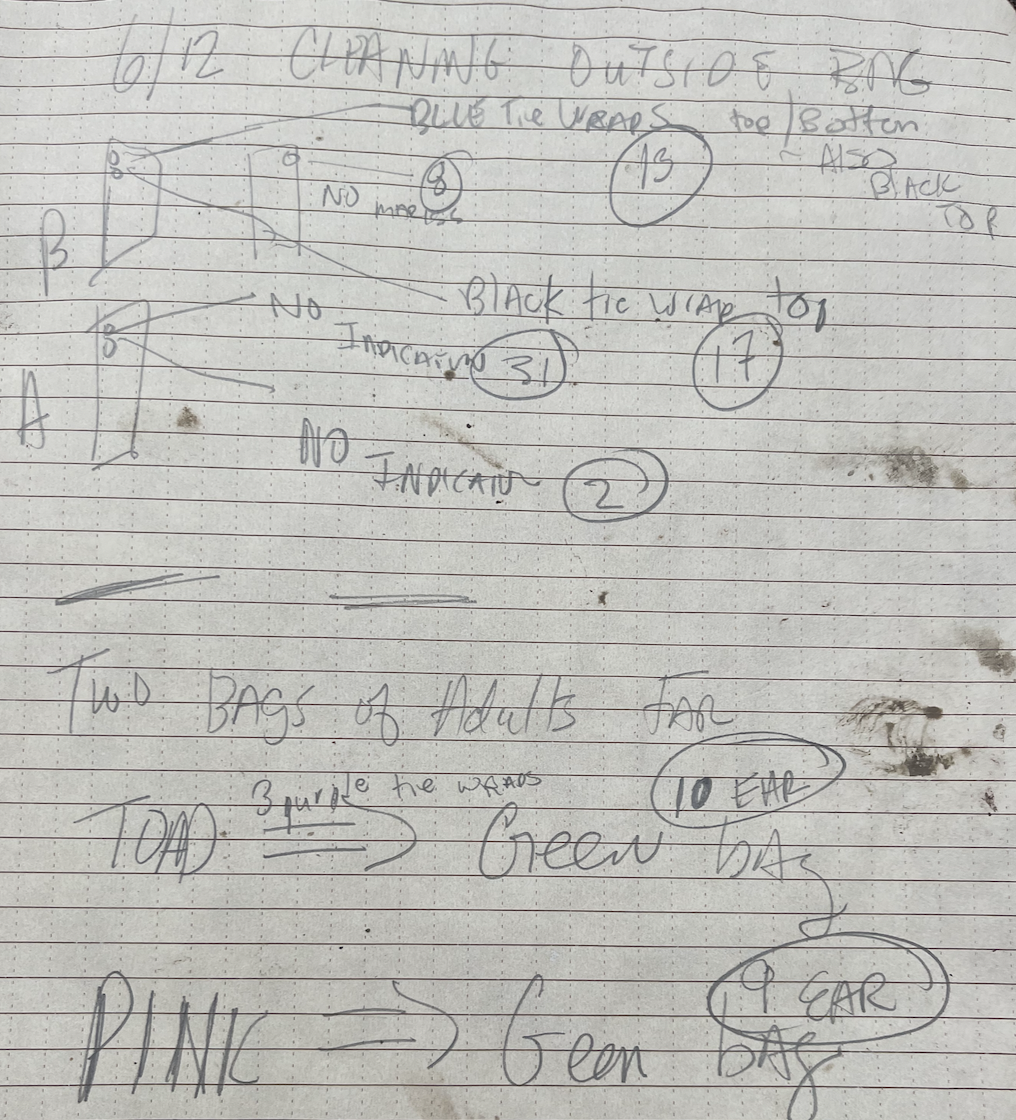
In A there were two bags re-labelled with White Tags: 31 and 2.
In B there were two bags re-labelled with White Tags: 13 and 17. 13 had blue tie wraps on top and bottom (and black on top). 17 had black tie wrap at top. It is assummed blue are BLUE.
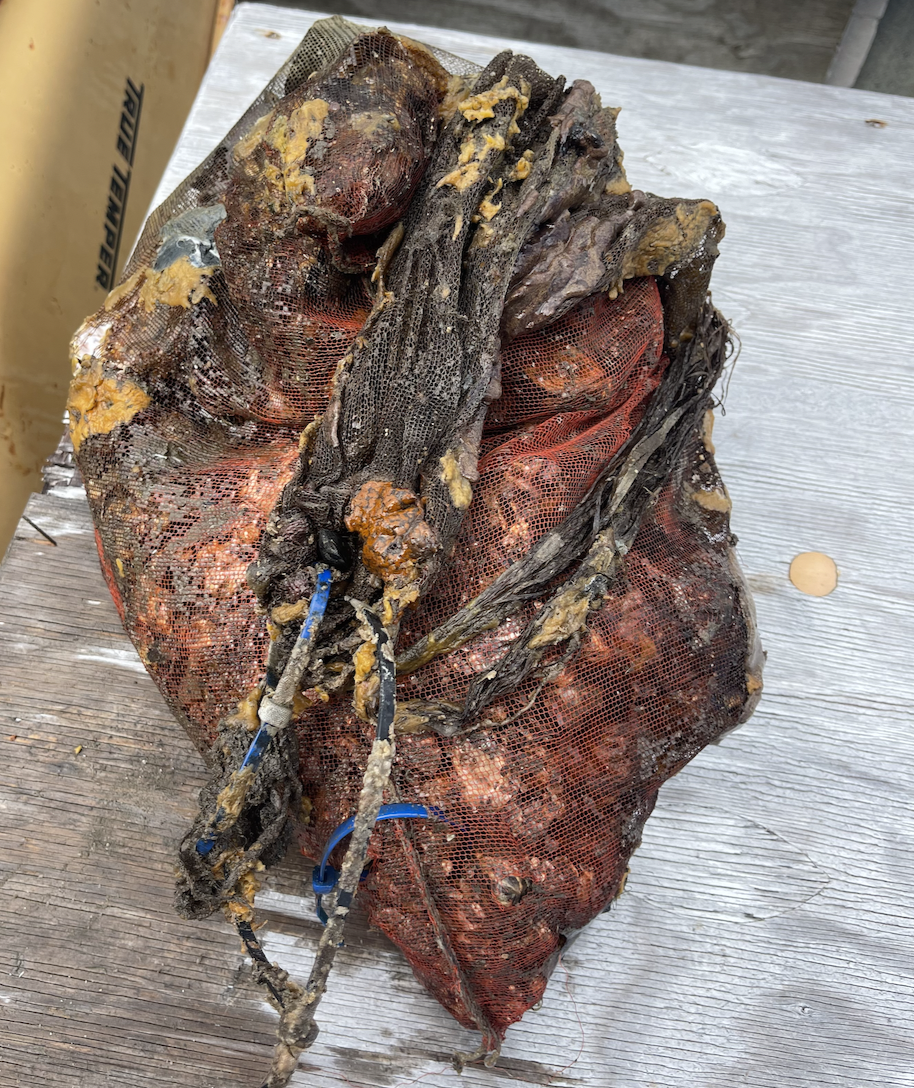
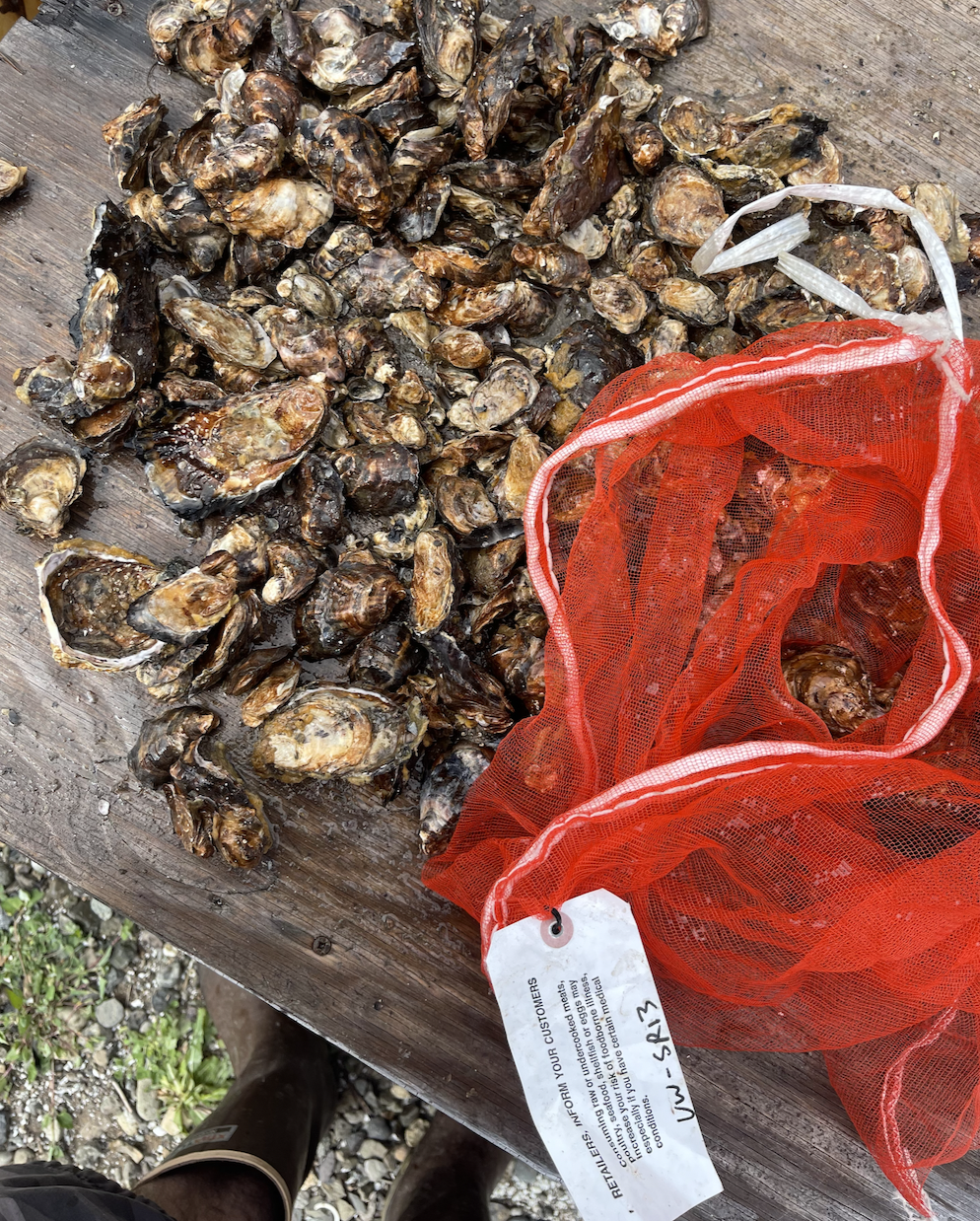
I also cleaned an additonal bag and labelled: White tag: 8
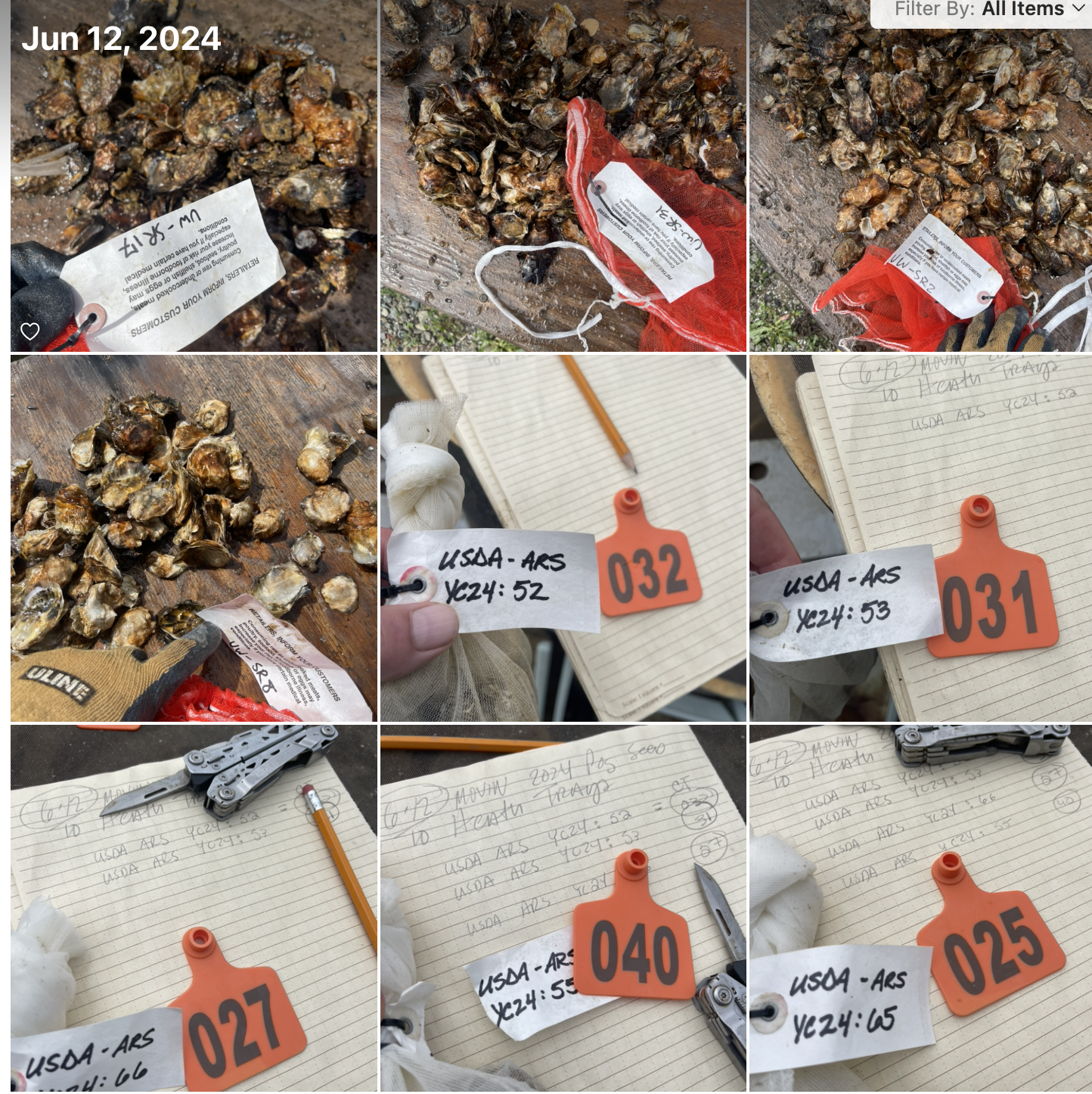
More inventory notes in Ariana’s Notebook.
The main activities included organizing and re-tagging oysters, setting up HUDL larval systems, and resetting temperature loggers.
Key activities were categorized into various efforts:
- Effort B to F: Oysters were moved and re-tagged using cattle tags and distributed across different upweller tanks.
- Effort F: Special attention was given to broodstock received from USDA ARS, which were kept in adult bags and monitored.
- LCO Project: Focused on moving spat from silos to bags in outdoor upwellers.
The post also covered the setup of technical equipment and maintenance:
- HUDL Systems: Installation included setting up air lines, cleaning HUDLs, and adjusting heaters to control water temperatures.
- Weekly Measurements: Temperature, pH, and salinity of tanks were measured and recorded.
- Logger Data: New Hobo Tidbit loggers were launched to collect temperature data.
The work done on this field day was part of ongoing efforts to manage and monitor oyster populations effectively, with detailed data being recorded and made accessible via GitHub for further analysis. This reflects the thorough and organized approach to field research and data management in marine sciences.
PH Stocks
Who is what?
see also https://github.com/RobertsLab/resources/issues/1689
Five where “confirmed” with ploidy indicated but spelled out label.
Orange = ? triploid
Pink = ?
Blue = ? Tetraploid
Yellow = F14 (2n) diploid
Dog [Putnam hobo] = F5 (2n)? triploid
Cat [very big, few] = F5 (3n)
Bird [Tank 3 hobo] = F13 (either 2n or 3n) triploid
Toad = F14 (3n)
Heath Trays
Five 2024 USDA family were placed in heath trays. (see pic above)
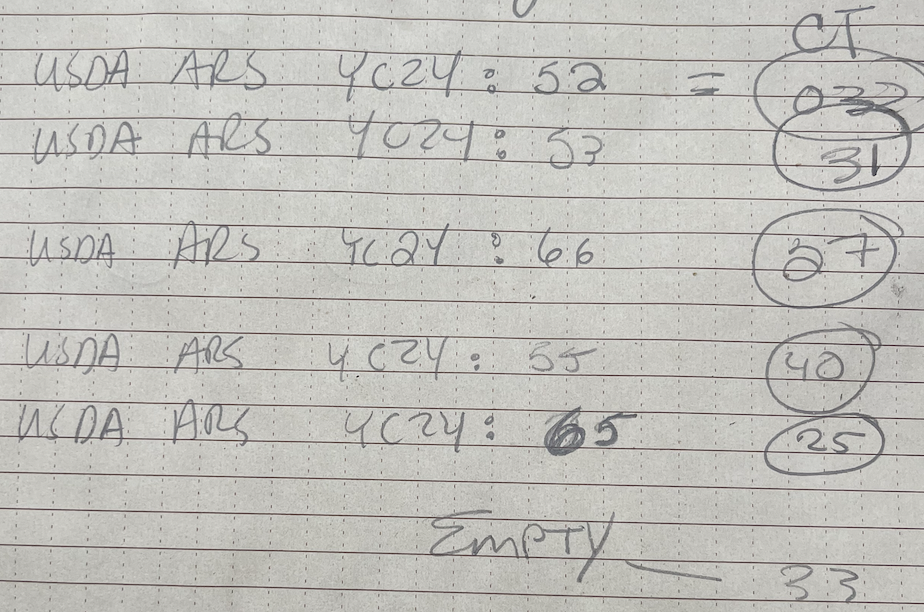
Spawning
See Ariana’s Notebook for details.
Sexing Oysters:
- Oysters are opened and examined to determine their sex by observing the gonads under a microscope. The quality of eggs and sperm is assessed based on their appearance—good eggs are round and concentrated, while good sperm exhibit motility.
Preparing Eggs:
- Eggs are extracted from selected female oysters and placed into dishes without water to prevent premature activation. The eggs are then homogenized by hand in a bag and sieved through mesh screens to filter out debris. They are rinsed with warm seawater to clean and prepare them for fertilization.
Preparing Sperm:
- Sperm are collected by gently squeezing the gonads over a dish of warm seawater. The sperm solution is then filtered through a fine mesh to ensure an optimal and clean concentration for fertilization.
Fertilization Process:
- The prepared sperm and eggs are combined in buckets with warm seawater. The process is carefully controlled to maintain a suitable sperm to egg ratio, ensuring effective fertilization. After combining, the mixture is monitored for signs of successful fertilization, such as the appearance of polar bodies.
Transferring to Larval Tanks:
- The successfully fertilized eggs are then transferred into large larval tanks. Conditions in these tanks are meticulously controlled, including temperature and pH. Microbial growth is managed by adding EDTA, and the larvae are initially fed after one day of fertilization, with subsequent feeding scheduled based on developmental progress.

